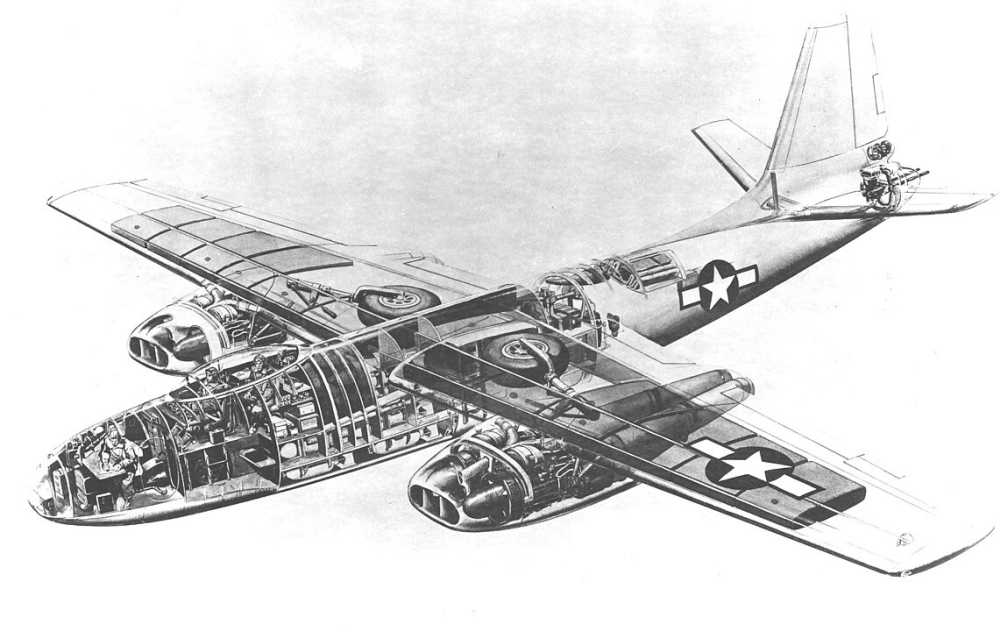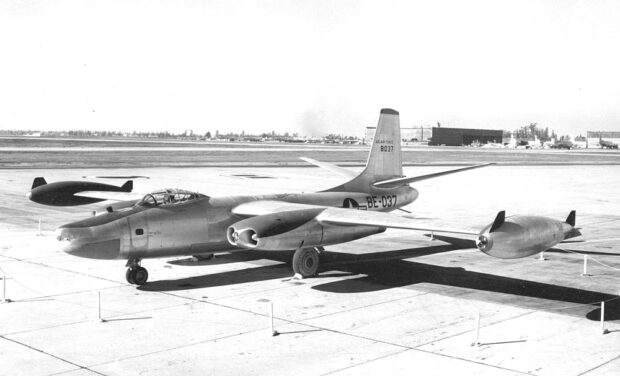The United States and Germany were the pioneers of aircraft during World War 2, including innovations with an incredible arsenal of weapon systems. As the war drew close to the end, the Luftwaffe launched the first jet-powered bomber, the Arado Ar 234, in a last effort to turn the tide of the war.
The Americans immediately began to work on a bomber with similar capabilities. The B45 Tornado was produced by North American Aviation, but the war ended before their prototype was tested in combat. Still, it would eventually achieve several firsts during its operational service.
The B45 was the first four-engine jet bomber to fly, and the first to refuel in mid-air. It was also the first jet bomber to enter service with the United States Air Force, and the first capable of carrying a nuclear weapon. Incidentally, it was also the first jet bomber to be successfully shot down by a jet fighter…
The B-45 originated from a wartime initiative launched by the U.S. War Department, which sought a company to develop a jet-propelled bomber to equal those being fielded by Nazi Germany, such as the Arado Ar 234. Following a competitive review of the submissions, the War Department issued a contract to North American to develop its NA-130 proposal; on 8 September 1944, work commenced on the assembly of three prototypes. Progress on the program was stalled by post-war cutbacks in defense expenditure, but regained importance due to growing tensions between America and the Soviet Union. On 2 January 1947, North American received a production contract for the bomber designated B-45A, from the USAF. On 24 February 1947, the prototype performed its maiden flight.
Soon after its entry to service on 22 April 1948, B-45 operations were troubled by technical problems, in particular poor engine reliability. The USAF found the plane to be useful during the Korean War performing both conventional bombing and aerial reconnaissance missions. On 4 December 1950, the first successful interception of a jet bomber by a jet fighter occurred when a B-45 was shot down by a Soviet-built MiG-15 inside Chinese airspace. During the early 1950s, forty B-45s were extensively modified so that they could be equipped with nuclear weapons. Improvements were made to their defensive systems and the fuel tankage was expanded to increase their survivability and range.

Cutaway view of XB-45. Note the intended radar-sighted tail gun position, later replaced by a conventional manned position
In its heyday, the B-45 was important to United States defense strategy, performing the strategically critical deterrence mission for several years during the early 1950s, after which the Tornado was superseded by the larger and more capable Boeing B-47 Stratojet. Both B-45 bombers and reconnaissance RB-45s served in the USAF’s Strategic Air Command from 1950 until 1959, when the USAF withdrew the last ones in favor of the Convair B-58 Hustler, an early supersonic bomber. The Tornado was also adopted by the Royal Air Force (RAF) and operated from bases in United Kingdom, where it was used to overfly the Soviet Union on intelligence-related missions. The RAF operated the type until it had introduced its own indigenously developed jet bomber fleet in the form of the English Electric Canberra.
Top Photo: North American RB-45C
Sources: Wikipedia; YouTube


